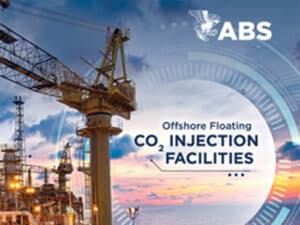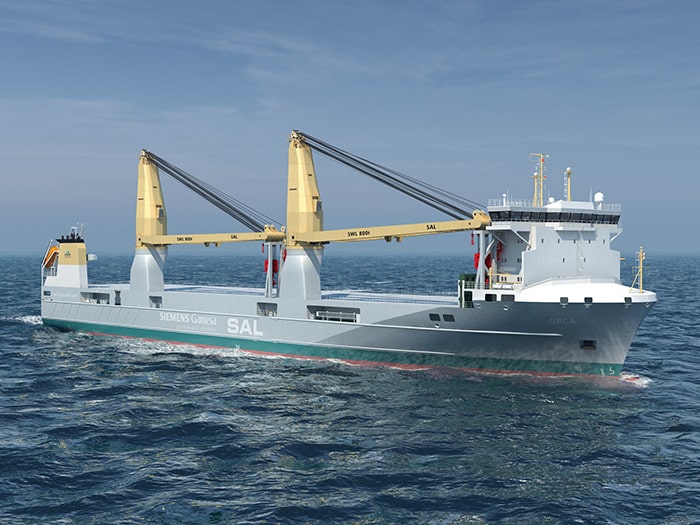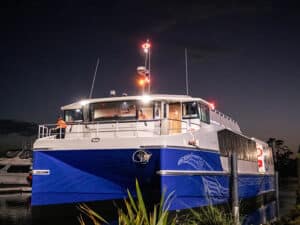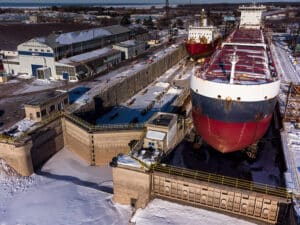
New generation heavy lift ships will be green methanol ready
Written by Nick Blenkey
Sperry Marine’s deliveries for the four ships, which are on order at at WuHu shipyard, China, will include its VisionMaster Net bridge, NAVIGAT gyrocompass and NAVIPILOT 4500N autopilot [Image; © SAL Heavy Lift GmbH & Co. KG]
A series of new-generation heavy lift ships includes a methanol dual fuel hybrid propulsion plant as part of German operator SAL Heavy Lift’s commitment to decarbonization. Called the Orca Class, they are being built at China’s Wuhu Shipyard under a joint newbuilding program involving SAL Heavy Lift and partner Jumbo Shipping of the Netherlands.The building contracts cover four firm, plus two optional, ships
“The Orca vessels are setting new standards in global heavy lift shipping. They represent the new benchmark both in terms of their technical capabilities and modern climate-friendly propulsion systems,” says Dr. Martin Harren, Owner and CEO of SAL Heavy Lift and the Harren Group. “The ships will be the most efficient vessels in their class with consumption and emission figures far superior to any existing heavy lift vessel today. As a signatory to the ‘Call to Action for Shipping Decarbonization’, our group has committed to the decarbonization of shipping activities by 2050. I am proud that this newbuilding order shows how we are keeping our promise for significant, concrete action.”
GREEN METHANOL
If green methanol becomes available in key ports as anticipated towards the end of the decade, the Jumbo-SAL-Alliance says it will be able to offer its customers carbon-neutral transport solutions – a defined environmental protection goal that both companies share.
Those customers include Siemens Gamesa Renewable Energy, whose global commodity manager – ports & transportation, offshore, Christian Johansen, says: “We are excited to continue and build on our strategic partnership with SAL Heavy Lift with their Orca Class program. We see their ultra-efficient profile and carbon-neutral potential as a perfect fit with our aim of decarbonizing our supply chain. As companies, we share a lot of the same values – and we are happy to embark on this journey together with SAL.”
COMPACT SIZE, HIGH CAPACITY
The 14,600 dwt heavy lift ships measure 149.9 meters long x 27.2 meters beam. Despite their compact outer dimensions, the vessels have a box-shaped single cargo hold with the largest dimensions in its class. If the hatch covers, with a capacity of 10 tonnes per square meter are not utilized for stowing super-heavy deck cargoes, such as 3,000 tonne cable carousels, the vessels can accommodate over-height cargo in the hold and sail with open hatch covers up to full scantling draft.
Ice class notation 1A, a Polar Code certification and the reduced design temperature of the hull and equipment allow the ships to safely operate in cold conditions.
Two 800 tonne Liebherr cranes specifically designed for this ship type can handle cargo items weighting up to 1,600 tonnes in tandem.
“Despite extremely high crane pedestals of more than 11 meters, the overall crane height and thereby the vessel’s air draft remains at just about 38 meters. This makes it possible for the vessel to pass Kiel Canal and enter strategically important ports worldwide,” explains Sebastian Westphal, CTO at SAL Heavy Lift. “The fully electric cranes are perfect for the vessel’s intelligent energy management and recovery system. This is based on a battery storage system that can be used together with conventional gensets in hybrid mode, or in combination with the vessel’s shore power connection for fully electric port operations.”
WÄRTSILÄ SOLUTIONS
The vessels will be the first methanol capable ships to employ a variable speed main engine. Their Wärtsilä hybrid propulsion system will feature a variable-speed Wärtsilä 32 main dual fuel engine and also includes an energy storage system, a PTO/PTI generator and motor, a multidrive converter, and the Wärtsilä Energy Management System for controlling and optimizing the hybrid operations. The energy storage system will be based on lithium-titanium-oxide (LTO) batteries, which can handle higher amounts of deep cycles than normal lithium-ion based systems. The ESS will significantly reduce the fuel consumption and/or the necessary size of the port’s electric shore connection during crane operations while also providing fuel savings at sea by reducing Engine Load fluctuations in rough seas.
For each vessel, Wärtsilä will also supply the gearbox, the controllable pitch propeller (CPP), the bow and stern thrusters, air shaft seals, as well as the sterntube and bearings.
At a service speed of 15 knots the vessels will consume significantly less than 20 tonnes of fuel oil per day – similar to far smaller-sized and geared MPP vessels. Alternatively, the vessels will be able to trade at a slow, ultra-efficient speed of 10 knots at 6 tonnes while still being able to reach a maximum speed of 18.5 knot for urgent deliveries – for example if a wind farm installation vessel is waiting for an urgent component delivery.




